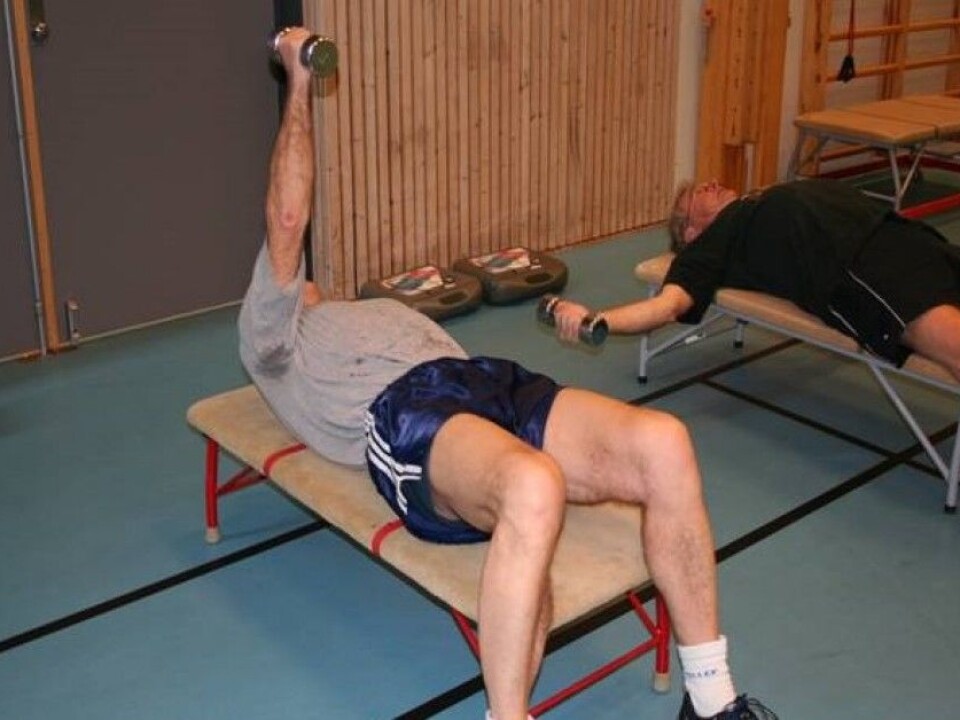This article was produced and financed by The Norwegian School of Sport Sciences

You are never too old to exercise
Strength training makes seniors better equipped to tackle aging. And, people over the age of 65 benefit greatly from such training.
Doctoral research fellow Hilde Lohne-Seiler at the Norwegian School of Sports Sciences conducted a study on strength training and physical activity in Norwegian seniors.
When people reach their 30s, they will start to lose muscle mass if they are inactive. About one percent of our muscle mass is lost per year if not counteracted by strength training. As we age, this will impact our lives greatly.
"With reduced muscle strength, daily activities such as walking up stairs, carrying shopping bags or getting out of bed could become a challenge. And, we will experience increased balance impairment as we grow older," says Hilde Lohne-Seiler.
Training programs for seniors
To determine the most effective training principles for seniors, Lohne-Seiler compared traditional strength training (using machines) with functional strength training (not using machines). She studied a group of 53 seniors. The strength training was performed two times per week for three months. According to the findings, both training programs resulted in improved muscular strength but traditional strength training differed in one key aspect. Upper body muscle power (a combination of force and velocity) increased by 25 percent in the traditional strength training group.

"This is a significant improvement which could be a result of working out using machines that give you greater control over the resistance being used. Functional strength training involves more muscle groups and varying conditions (more so than traditional strength training) which have a greater effect on balance and stability.
Consequently, functional strength training could be more relevant for daily activities that require a certain degree of muscle strength and balance. In addition, functional strength training could easily be carried out at home," says Lohne-Seiler.
No gender differences in physical activity levels
In the study, she examined physical activity in Norwegian seniors. In total, 560 subjects in the 65-85 age group were given an activity tracker for seven days. In addition, each subject completed a self-assessment questionnaire on their state of health.
The data showed that only 21 percent of the participants met the recommendations for physical activity (30 minutes of activity a day). In the 80-85 age group, only six percent met this recommendation.

"International studies have found a difference between men and women but this is not the case in Norway. We find that Norwegian female seniors are just as physically active as their male counterparts. Also, they appear to be more physically active than senior citizens in USA, UK and Iceland," says Lohne-Seiler.
The data also indicates that Norwegian female seniors spend more time on low-intensity activities and less time being inactive and on strenuous activities compared to male seniors.
1000 steps may be enough
Life expectancy is continuously on the rise in Norway. If the Norwegian authorities are to implement appropriate measures for the different age groups, it is vital to study activity levels, physical condition and state of health in seniors. Small but effective measures to promote physical activity among seniors would have a significant impact on our society.
With improved physical condition and better personal health, more seniors could be self-reliant and less dependent on medication.
"Seniors need to be more physically active. The study demonstrated a correlation between walking 1000 steps a day and having better balance and improved dynamic back strength. This may influence their functionality and ability to be self-reliant in their everyday lives. Also, we need to change our mindset. More seniors are using modern technology these days. When will we see the first training app for seniors?" Lohne-Seiler asks.
-------------------------------------
Read the Norwegian version of this article at forskning.no



































